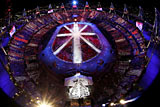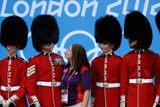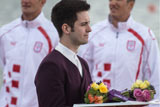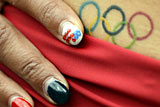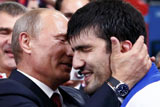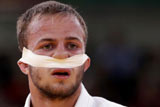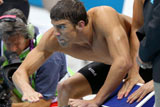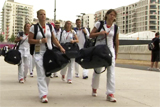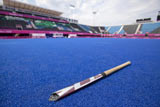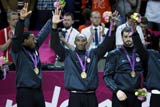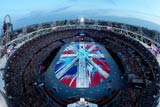Rowing
Updated: 2012-05-16 11:30:25
(london2012.com)
|
|||||||||||
The Rowing competition at the London 2012 Games will feature extraordinary displays of power and passion on the world-class waters at Eton Dorney.
Although its history dates back centuries, rowing only came of age as a competitive sport in the last 200 years. Interest began to increase after Oxford and Cambridge Universities began their rivalry on the Thames in 1829, a rivalry that continues today in the shape of the annual Boat Race.
Today's sport is renowned for its competitors’ legendary displays of strength and stamina, as athletes push themselves through the pain barrier in an attempt to win Olympic gold.
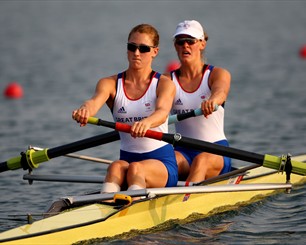 |
Competition dates
July 28 - Aug 4
Competition venueEton Dorney, Buckinghamshire
Number of medal events
14 - men's and women's events ranging from Single Sculls, featuring solo rowers, to the Eight, featuring teams of eight rowers plus a cox.
Number of competitors
550 (353 men and 197 women). Each country is limited to a total of 48 athletes (28 men and 20 women).
Field of play
The lake at Eton Dorney is 2,200m long. Races are 2,000m, with six lanes used.
History of Rowing at the Olympic Games
Rowing has been staged at every Games since making its debut on the Olympic programme at Paris in 1900. The youngest Olympic champion is thought to be an anonymous French boy who coxed for a Dutch pair at the inaugural competition. The boy, aged no more than 12, took part in the Victory Ceremony but then disappeared. Women's Rowing events joined the Olympic programme at Montreal 1976.
The basics
Rowing events are head-to-head races, ranging from Single Sculls to the Eight, contested by teams of eight rowers with a cox. There are also lightweight events, where there are weight limits on the athletes in each boat.
Competition format
The format of the competition depends on how many boats are competing. All events include a repechage - a series of further races to qualify boats for semi-finals or finals, and to rank all boats in order of performance.
Events with 12 or fewer boats start with two heats. The best boats in heats 1 and 2 qualify for final A, which determines places 1-6 (including the medals). Unsuccessful boats from the heats compete in the repechage round, which offers a second chance to qualify for final A. Unsuccessful boats from the repechage go forward to final B, which determines places 7-12.
Events with 13-18 boats begin with heats, from which the best boats qualify directly for semi-finals A/B. All other boats progress to the repechage round, which offers a second chance to qualify for the semi-finals. The best three boats in semi-finals A/B qualify for final A, which determines places 1-6 (including the medals). Unsuccessful boats from semi-finals A/B go forward to final B, which determines places 7-12. Unsuccessful boats from the repechage go forward to final C, which determines places 13-18.
Events with 19-24 boats begin with heats, from which the best boats qualify directly for semi-finals A/B. All other boats progress to the repechage round, which offers a second chance to qualify for the semi-finals. The best three boats in semi-finals A/B qualify for final A, which determines places 1-6 (including the medals). Unsuccessful boats from semi-finals A/B go forward to final B, which determines places 7-12. Unsuccessful boats from the repechage go to semi-finals C/D; from here, they go either to final C (places 13-18) or final D (places 19-24).
If there are more than 24 boats in an event, the four best boats from each heat go through to the quarter-finals, with the other boats competing in a repechage to fill the remaining quarter-final places. The best three boats from each quarter-final progress to the semi-finals, with the top three from each semi-final advancing to final A. The other boats compete in finals B, C, D and E (which rank boats from seven downwards).
Events with 25 or more boats begin with heats, and the four best boats in each heat qualify directly for the quarter-finals. All other boats compete in the repechage round, which offers a second chance to qualify for the quarter-finals. The best three boats in each quarter-final qualify for semi-finals A/B, with the best three boats in each semi-final qualifying for final A. All other boats progress through a series of races to finals B, C, D, E and (if necessary) F, which determine the other placings.
Officials
Officials include the President of the Jury, timekeepers, aligner, starter and judges at the finish.
Keys to success
Rowing depends on a combination of immense strength and stamina. Technique and teamwork are vital too to ensure getting the maximum speed and distance out of every stroke. A rower or team must time their race to perfection, ensuring they have enough energy left for a fighting finish if necessary.
Breaking the rules
Athletes can be penalised for infringements such as a false start, leaving their lane or impeding another boat.
Jargon buster
Coxswain - The coxswain, or cox, typically sits at the stern and is responsible for steering the boat and directing the crew.
Lightweight - In women's lightweight events, no rower may weigh more than 59kg, with an average weight per crew member not exceeding 57kg. For men, the single-rower maximum is 72.5kg, and the maximum crew member average shall not exceed 70kg.
Scull - To row with two oars, one in each hand.
Sweep - To row with one oar.
Medal Count |
||||
| 1 | 46 | 29 | 29 | |
| 2 | 38 | 27 | 22 | |
| 3 | 29 | 17 | 19 | |
| 4 | 24 | 25 | 33 | |
| 5 | 13 | 8 | 7 | |
| 6 | 11 | 19 | 14 | |

